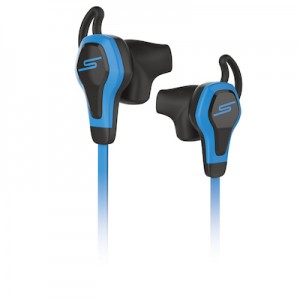 Raleigh, North Carolina-based Valencell, which embeds its health and medical sensors in some wearable devices, most notably in sensor-equipped headphones, raised $2.6 million in a combination of debt and equity, according to an SEC filing.
Raleigh, North Carolina-based Valencell, which embeds its health and medical sensors in some wearable devices, most notably in sensor-equipped headphones, raised $2.6 million in a combination of debt and equity, according to an SEC filing.
This round brings the company's total funding to date -- again, including some debt funding -- to $16.1 million. Its last funding round, $7 million, was led by new investor WSJ Joshua Fund, a recently founded Texas-based investor group. Existing investors TDF Ventures, True Ventures and Best Buy Capital also contributed.
Valencell doesn't sell products directly to consumers, but instead licenses out its PerformTek sensors to be incorporated into different wearables. Its technology is a part of various wearables, including the iRiver On headset and LG’s Heart Rate Earphones, which are designed to work in tandem with LG’s LifeBand activity tracker. Its tech is also in two armband trackers from Scosche: the Rhythm + and Rhythm Smart and Atlas, a wristband designed to detect specific exercises. Two more sets of earbuds round out known portfolio: the Jabra Sport Plus and SMS Audio earbuds, which the company worked with Intel to develop.
Earlier this summer, Valencell performed a study at its Biometric Lab to compare its PerformTek technology to the recently released Apple Watch. In the study, 22 participants wore both devices and a Polar chest strap heart monitor while participating in a treadmill workout consisting of an 8-minute variable-intensity interval test. The Valencell technology showed an 82 percent accuracy rate with 18 of 22 participants receiving an accurate heart rate (heart rate within 5 percent of benchmark) reading during the test, compared to 23 percent accuracy from the Apple Watch.
“Our Biometrics Lab is committed to continuously testing the latest in fitness wearables to better understand the challenges and limitations of the current products on the market," Chris Eschbach, Director of Exercise Science and Clinical Trials at Valencell, said in a statement. "Scientists at heart, we publish how we test and validate wearable sensors so that the academic community can reproduce the same experiments and challenge our results, ultimately promoting the best interests of public health.”
That said, the small study has not been peer-reviewed or published in its entirety. Valencell argues that its sensors are more versatile than competitors' offerings, capturing accurate heart rate readings in a wider variety of activities.
"It's easy to be fooled by wrist-based heart rate monitors that appear to work well during rest or low activity levels, but the bones, tendons, muscles, and vascular structure of the wrist can interfere with the ability to accurately measure heart rate and other biometrics during exercise,” Dr. Steven LeBoeuf, President of Valencell, said in a statement. “Our biometrics experts recognized these challenges with the wrist and further developed Valencell’s patented PerformTek biometric technology to deliver an accurate heart rate reading anywhere on the body, including the wrist — on anyone, at anytime, doing any activity.”
In August, LeBoeuf joined the National Sleep Foundation's technology council, joining representatives from Beddit, Emfit, Jawbone, MetroNaps, Misfit Wearables, and Responsive Surface Technology (ReST). This could signal a move into sleep tracking for the company.
















